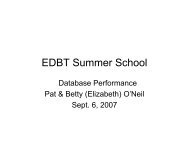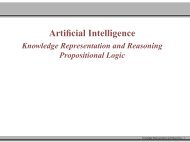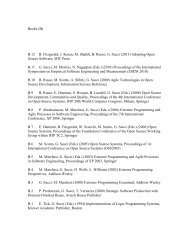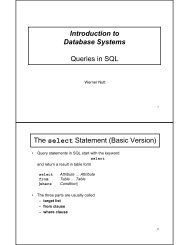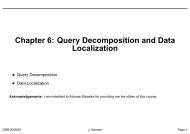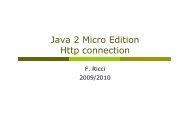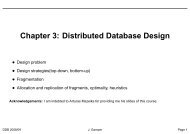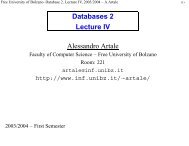Inference in first-order logic
Inference in first-order logic
Inference in first-order logic
You also want an ePaper? Increase the reach of your titles
YUMPU automatically turns print PDFs into web optimized ePapers that Google loves.
Conversion to CNF<br />
Everyone who loves all animals is loved by someone:<br />
∀x (∀y Animal(y) → Loves(x,y)) → (∃y Loves(y,x))<br />
1. Elim<strong>in</strong>ate biconditionals and implications: p → q ≡ ¬p ∨ q<br />
∀x (¬∀y ¬Animal(y) ∨ Loves(x,y)) ∨ (∃y Loves(y,x))<br />
2. Move ¬ <strong>in</strong>wards: ¬∀x p ≡ ∃x ¬p, ¬∃x p ≡ ∀x ¬p:<br />
∀x (∃y ¬(¬Animal(y) ∨ Loves(x,y))) ∨ (∃y Loves(y,x))<br />
∀x (∃y ¬¬Animal(y) ∧ ¬Loves(x,y)) ∨ (∃y Loves(y,x))<br />
∀x (∃y Animal(y) ∧ ¬Loves(x,y)) ∨ (∃y Loves(y,x))<br />
<strong>Inference</strong> <strong>in</strong> <strong>first</strong>-<strong>order</strong> <strong>logic</strong> – 23



